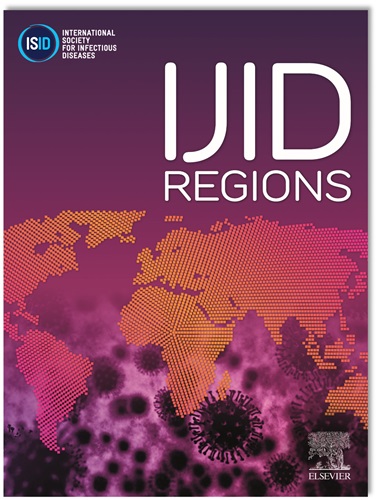Significant rise of Chlamydia pneumoniae infection in 2024 in Marseille, France
IF 4.3
2区 医学
Q1 INFECTIOUS DISEASES
引用次数: 0
Abstract
Objectives
We detected in October 2024 an abnormally high number of Chlamydia pneumoniae diagnoses through real-time surveillance of infections in Southeastern France, which followed significant increases in Mycoplasma pneumoniae and Bordetella pertussis diagnoses. Therefore, we retrospectively analyzed C. pneumoniae quantitative polymerase chain reaction (qPCR) results performed on respiratory samples collected between 2018 and 2024 in our center and described features of these infections.
Methods
C. pneumoniae qPCR was part from a multiplex syndromic panel or an in-house simplex qPCR assay. Next-generation sequencing was performed directly on available respiratory sample residues using Oxford Nanopore/Illumina technologies.
Results
We observed a 19-fold increase of C. pneumoniae qPCR positivity in 2024 vs 2018-2023. Five (0.02%) of 25,255 respiratory samples were positive during 2018-2022, five (0.12%) of 4294 in 2023, and 37 (0.64%) of 5795 in 2024 (21 during September to October). Cases were mostly in children, followed by young adults. The highest incidence was in children aged 11-15 years (eight of 1075, 0.7%) and 6-10 years (eight of 1669, 0.5%). We obtained four (near) full-length C. pneumoniae genomes. They were of serotype ST16 and those the most closely related with each other, apart from the six other ST16 genomes from GenBank, suggesting an epidemic spread in our area.
Conclusions
The present findings warrant a close monitoring of diagnoses of C. pneumoniae infections at the local and country scales and to implement genomic surveillance and characterize drug resistance for diagnosed cases.
2024 年法国马赛的肺炎衣原体感染率显著上升。
我们在2024年10月通过对法国东南部感染的实时监测发现肺炎衣原体诊断率异常高,随后肺炎支原体和百日咳博德泰拉诊断率显着增加。因此,我们回顾性分析了本中心2018-2024年间采集的呼吸道样本的肺炎原体qPCR结果,并描述了这些感染的特征。方法:肺炎原体qPCR部分来自多重综合征面板或内部单一qPCR检测。使用Oxford Nanopore/Illumina技术直接对可用的呼吸样本残留物进行下一代测序(NGS)。结果:我们观察到2024年肺炎原体qpcr阳性较2018-2023年增加了19倍。2018-2022年25255份呼吸道样本中阳性5份(0.02%),2023年4294份中阳性5份(0.12%),2024年5795份(9 - 10月21份)中阳性37份(0.64%)。病例主要是儿童,然后是年轻人。发病率最高的是11-15岁儿童(8/1,075,0.7%)和6-10岁儿童(8/1,669,0.5%)。我们获得了4个(接近)全长的肺炎球菌基因组。除GenBank中其他6个ST16基因组外,它们均为ST16血清型,且彼此亲缘关系最密切,提示本地区存在疫情传播。结论:目前的研究结果需要在地方和国家范围内密切监测肺炎支原体感染的诊断,并对诊断病例实施基因组监测和耐药特征。
本文章由计算机程序翻译,如有差异,请以英文原文为准。
求助全文
约1分钟内获得全文
求助全文
来源期刊
CiteScore
18.90
自引率
2.40%
发文量
1020
审稿时长
30 days
期刊介绍:
International Journal of Infectious Diseases (IJID)
Publisher: International Society for Infectious Diseases
Publication Frequency: Monthly
Type: Peer-reviewed, Open Access
Scope:
Publishes original clinical and laboratory-based research.
Reports clinical trials, reviews, and some case reports.
Focuses on epidemiology, clinical diagnosis, treatment, and control of infectious diseases.
Emphasizes diseases common in under-resourced countries.

 求助内容:
求助内容: 应助结果提醒方式:
应助结果提醒方式:


